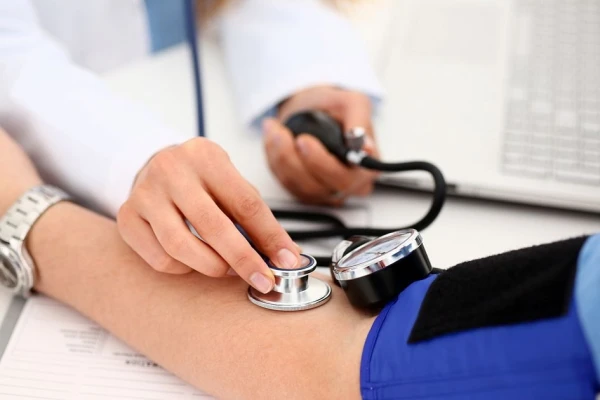
The modern pace of life forces many to pay more attention to external matters than to their own well-being. However, regular monitoring of basic health indicators allows for the prevention of serious diseases and timely consultation with a doctor. These parameters do not require complex examinations — many of them can be checked quickly and inexpensively.
Below are nine important indicators that can help better understand the state of your body and timely notice alarming signals.
1. Blood Pressure
Normal blood pressure is 120/80 mm Hg. If the systolic reading (the upper number) rises to 121–129, it is worth being cautious — this is prehypertension. Persistent high blood pressure increases the risk of atherosclerosis, heart attack, and stroke.
Low blood pressure (90/60 and below) is also dangerous: it can cause dizziness, weakness, and even shock. It is especially important for people over 40 to regularly measure their blood pressure — at least once a year. If readings reach 180/120 and are accompanied by chest pain, speech or vision disturbances, it is necessary to urgently call an ambulance.
2. Cholesterol Level
Cholesterol is involved in cell formation and metabolic processes, but its excess leads to plaque formation in blood vessels. This increases the risk of cardiovascular diseases. Regular blood tests can help detect abnormalities before symptoms appear.
3. Triglyceride Level
Like “bad” cholesterol, elevated triglycerides are associated with the risk of atherosclerosis. Checking their levels is an important part of preventive examinations.
4. Thyroid Hormones
The thyroid gland affects metabolism, heart function, the nervous system, and even fertility.
— Excess hormones can cause weight loss, insomnia, and rapid heartbeat.
— A deficiency leads to fatigue, sensitivity to cold, dry skin, and hair loss. If there are suspicions of disorders, a doctor will prescribe tests for TSH, T4, and T3.
5. Heart Rate
Normally, the resting pulse should be between 60 and 100 beats per minute. Rhythm disturbances can cause weakness, fainting, and shortness of breath. Systematic irregularities are a reason to consult a cardiologist.
6. Moles and Neoplasms
The more moles, the higher the risk of developing melanoma. It is advisable to carefully examine the skin once a month, following the ABCDE principle:
A — asymmetry; B — irregular borders; C — uneven color; D — diameter greater than 6 mm; E — changes in shape and color.
If a mole has changed or a sore does not heal, it is better to visit a dermatologist.
7. Blood Sugar Level
Glucose is a source of energy, but its excess can damage blood vessels, kidneys, and the heart, while a deficiency can cause seizures and loss of consciousness. Regular tests help timely diagnose metabolic disorders.
8. Body Mass Index (BMI)
BMI helps assess risks associated with weight. It is easy to calculate: weight (in kg) / height² (in m). The normal range is 18.5–24.9. Significant deviations can signal risks of diabetes, heart diseases, and other problems.
9. Regular Check-ups
Even if you feel well, preventive check-ups with a therapist and specialized specialists remain an important part of self-care. It is easier to prevent a disease than to treat it.













Leave a comment